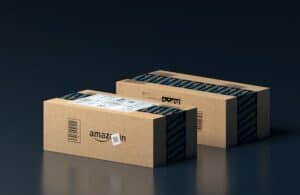By acquiring Retail Performance, RetailNext deepens its presence in the UK market, cementing its strategic growth in the British and European retail sectors and expanding its global footprint. More than 400 brands in over 90 countries have adopted RetailNext software.
A synergistic path forward
In an interview with Alexei Agratchev, CEO and co-founder of RetailNext, he discussed the synergies between the two companies. “Retail Performance has deep relationships with their clients that have been cultivated over many years, and RetailNext has invested heavily in technology, keeping it ahead of the competition. The team at Retail Performance has a great knowledge of the local markets and resources. The partnership is very synergistic.”
The deal coincides with RetailNext’s opening of new offices in the UK and Philippines, its headcount expansion (about 40 new employees will be added), and the onboarding of major new customers. “RetailNext is growing fast, and carefully planned acquisitions and partnerships will continue to be central to our growth strategy as we build out global bandwidth and bring our best-of-breed retail solutions into new markets,” said Agratchev. “Retail Performance is a leader in the footfall-tracking space, and we’re thrilled to welcome them into the family as we expand our mission in the UK and beyond.”
Ipsos, the parent company of Retail Performance, is one of the largest market research companies in the world and is a leader in using primary data from surveys, social media monitoring, and qualitative or observational techniques. As part of the RetailNext deal, Ipsos becomes a minority shareholder in RetailNext. “The partnership with RetailNext ensures Ipsos’ retail clients will continue to have access to footfall data. This puts us in a strong position to expand Ipsos’ Channel Performance services and bring solutions to market which reinvent retail analytics and insight,” stated Craig Bradley, Ipsos’ global head of channel performance.
Retail analytics grows significantly
As retailers came out of the pandemic and began reopening stores, understanding how shoppers use space within the stores was critical. Additionally, as retailers started rethinking the size of the stores and how to lay out stores to make them more relevant and convenient for shoppers, the use of analytics grew. In 2021, RetailNext grew by 30% as retailers invested in physical stores. “Brands cannot make money without the store presence, so scaling is key for broadening the physical store footprint,” said Agratchev. Even the retailers that are shrinking their actual store sizes are investing in analytics to help make data-driven decisions.
The future of in-store analytics
Agratchev discussed that the future of using analytics to understand physical store environments better would continue to grow for two reasons. One factor is the lower cost of capturing and analyzing data, which makes scaling easier for mid-size to larger companies. The second factor is the deeper data that can be collected with today’s enabling technologies. RetailNext plans to expand capabilities in predictive and prescriptive analytics.
Source: Forbes




